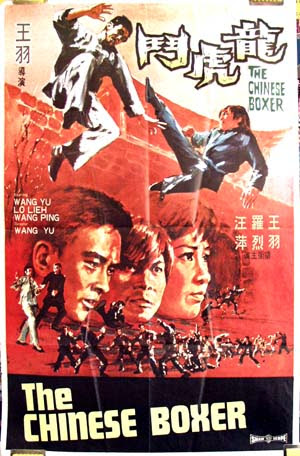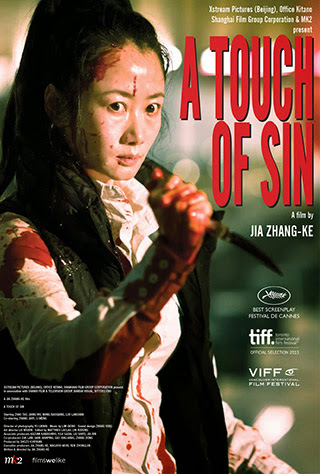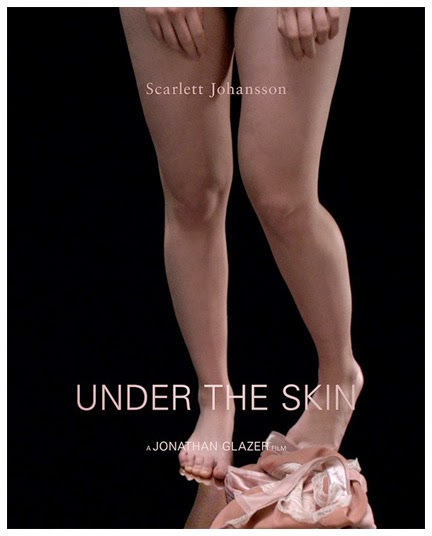Reading a general-interest pulp magazine is often like watching TV. Series characters seem to predominate, so that with any given issue, especially of a weekly like
Argosy you'd see several familiar faces. Authors strove to establish popular characters, hoping that they'd mean guaranteed sales. Some characters had whole magazines built around them; those were the "hero pulps" like
Doc Savage and
The Shadow. But series characters were prevalent everywhere, and this week's
Argosy has three recurring characters along with Dr. Kildare wrapping up his second serial. Karl W. Detzer's Michael Costello may have been designed as a fireman counterpart to Kildare. This week's cover story,
"Costello Learns to Take It," is Detzer's fourth story about the rookie firefighter. The title is self-explanatory. Costello sees his first major action, and his first corpse.
The smell -- the awful smell -- again caught Michael by the throat, pressed like iron fingers. The beam of the flashlight wavered briefly, steadied, wavered again. But Michael saw. He knew without seeing.
There wasn't much left of the bed. Only a black mass of sodden ashes, wet down by the hand-pump and the spray from the engine-stream, a piece of wet blanked, and there in the center....
In short, Costello cracks under the early pressure, is reassigned to a quieter neighborhood, gets into trouble out of frustration, but redeems himself predictably enough with conspicuous heroism just as it looks like he's hit bottom. Like many pulp stories it's a rite-of-passage/test-of-courage scenario addressing the unspoken anxieties of young adult readers, and Detzer, who specialized in fire stories, has enough skill to keep it freshly readable.
One of my favorite series characters since I discovered the pulps two years ago is Frank Richardson Pierce's No-Shirt McGee. Introduced in 1937, McGee is a "sourdough," an old timer from Klondike days, still tough but more often a wise counselor to younger characters, and also the hero of tales from his own past. No-Shirt was popular enough to get a cover in 1938, and Pierce kept him going well into the 1940s, taking him to
Short Stories after
Argosy went slick. McGee is a first-person narrator who tells rather than writes his tales. That means that Pierce writes in a vernacular style with loose grammar. If you've read Robert E. Howard's boxing stories about Sailor Steve Costigan, No-Shirt McGee is written in a similar style, -- down to the present-tense narration -- while the character is a good deal smarter than Costigan.
"The Bells of St. Mary's" is a dramatic tale of No-Shirt's youth, when he nearly freezes to death racing a claim jumper back to Portage Pass to help his injured partner. The title refers to the sound you allegedly hear as you're freezing, though No-Shirt has to decide whether he's actually hearing a real bell signaling his salvation. Here's a sample of Pierce's style:
Well, I'm on my feet again. I don't remember gettin' there, but I'm there and the bell is ringin'. It's off to the left now. It's makin' a sucker out of me. First it rings to the right, then to the left and I use up a lot of strength zig-zaggin' back and forth.
The wind is like something alive -- slapping at me and pushing -- but it is like knives, too -- a hundred buzz-saw blades cut through my clothes, slicing to the very bones. And it carries the sound of that bell in it so strong that the ringing seems to be a part of it. And I keep falling down and getting to my feet to stagger on again, walking to the endless pealing of that persistent bell.
The No-Shirt series is consistently entertaining and Pierce's style definitely elevates them. You can read some of these in the trove of
Argosy issues scanned onto Unz.org.
Here's one from earlier in 1939, for starters.
Another familiar series character in this issue takes Argosy in an even more comic direction. Dale Clark's J. Edwin Bell is a bottom-feeding Hollywood agent; the standard epithet for him is "the flesh peddler." Bell is constantly trying to jump on board a gravy train, whether by ripping off naive newcomers, studio executives or, preferably, both. In
"The Liar and the Mouse" he learns from "Hardboiled Hannah," a never-was actress turned party-girl spy that a top studio special-effects man is taking credit for the work of an underpaid underling. Hannah's idea is to blackmail the studio man into giving the underling a big contract from which she and Bell then take a big cut. Bell's idea is to cut Hannah out of the equation by making his deal with the studio man, getting his percentage from the big guy by intimidating the meek underling into accepting his old contract. The Bell stories are when
Argosy most reads like a sitcom, with the conniving Bell usually losing and often ending up on the run. The stories are amusing in their own right, and they're made more fun now by often-obsolete cultural references, e.g. "
Hardboiled Hannah didn't know it yet but that signed agreement wasn't worth anything more than a Republican vote in the state of Texas!" It was a different world back then.
On the serial front, Max Brand's
"Calling Dr. Kildare" closes with that gunshot victim cleared of a murder charge and his sister, a good bad girl, selflessly renouncing Jimmy Kildare's love at the urging of Dr. Gillespie, the dying man convincing Rosalie that he needs the young doctor more than she does. Soap opera stuff from a king of the westerns, complete with the pathos of renunciation, but movie audiences would eat it up when Metro-Goldwyn-Mayer released the movie version at the end of the month. Dr. Kildare would return for two more serials in the next two years. In chapter two of Norbert Davis's
"Sand in the Snow" Jim Daniels must begin to solve a murder at the estate where he and his wife are vacationing while keeping his hapless new friend, on the run from another dubious murder conviction, from being framed for it, and keeping the suspicious gigolo Dak Hassan, who sees Daniels as a fellow practitioner, from making moves on his wife. This is the sort of mystery story where there's a surplus of eccentric if not suspicious personalities, including the literal comedy relief of a husband-wife team of alcoholic Hollywood gag writers. To clarify:
A joke is something you say -- a gag is something you do. Gags are lots funnier. Like when you sock a guy in the mug with a pie, or hit him with a baseball bat, or give him a cigar that explodes. Those are gags.
And so's the close of this chapter, when Jim's surprised to find his wife getting into a catfight with a complete stranger in a public street. I'm not a big mystery fan, but Davis's story is diverting enough to keep me turning the pages.
In the penultimate chapter of Arthur Leo Zagat's
"Seven Out of Time," our team of time-lost humans captures one of the future-earth
doctils and whips up a plan to destroy the doctils' colony on a distant planet in order to thwart their plan to take over Earth 1939, sacrificing themselves if necessary. The twofold plan involves destroying a barrier protecting the doctils from the planet's hostile indigenous life and killing the doctils'
matra, the last true female preserved for breeding purposes.
She was far greater in size than any woman we had seen, but she was formed like the women we knew, and not like the grotesque beings who guarded her. Her skin was white as the fabric on which she was stretched, and lustrous. Great-bosomed she was, and huge-limbed, and tremendously wide of hip. Her eyes were closed in a deep slumber that somehow I knew was something other than sleep. The contours of her face had an almost unearthly beauty, yet she wore, like a mask, an expression of bovine placidity, of mindless calm, that made her somewhat less than human.
Why didn't they put
that on the cover?
Rounding out this week are two stand-alone stories. Nat Shachner, who specialized in sci-fi for the pulps and historical sketches for
The American Mercury, contributes
"Test for a Tatar," which comes as close as anything in Argosy to the blood and thunder people associate with real pulp fiction. It's a gruesome tale of the rise of Temujin the Mongol to power and his taking of the name Genghis Khan. It's told from the viewpoint of Subotai, the Khan's loyal vassal, who sees his lord manipulated and set up for assassination by Targoutai the Taidjut, though who the real manipulator is proves open to question. A seemingly drunken Temujin tests the loyalty of his own tribesmen by ordering them to kill their favorite horses, and then their favorite wives. Luckily, Subotai is a bachelor, and the other men have wives to spare. Targoutai finally goads Temujin into killing his own father, but Subotai thwarts the Taidjut's plan to slay Temujin at his moment of triumph.
Argosy is no kiddie pulp and its stories can take an amoral turn, but there really seems to be no point here other than mayhem -- but I suppose there was an audience for that, too. Finally, the editor predicts that A. M. Burrage's
"Out to Rest" is "certain to become one of the most memorable short stories of the year." It's really a trifle, and I can't imagine its premise was much less familiar then than it is now. A soldier (or is it a former soldier) can't tell whether he's dreaming in wartime of his death in bed two decades later or dreaming in the present of his dead comrades from the war. Can you guess which it is?
* * *
There was at least one kind of story rarely or never seen in
Argosy. As letter writer Mrs. Clay Clark of Camden ME writes in this week's Argonotes column: "
ARGOSY has always printed a different type of story for each and every issue, a miracle, yet there is one type I cannot recall ever seeing ... the Negro stories." By which she means comical stories about those funny colored people who talk in
Amos 'n Andy dialect. The editor answers: "
We don't know why people don't write Negro stories for ARGOSY, but we are rather relieved, because unless a Negro-dialect yarn is very, very good, it is apt to be simply terrible."
I've found a few racist stories in
Argosy, and a few -- fewer, sadly -- that actually count as anti-racist. I hope to share some of the latter with you sometime, but as for all my American readers, the April 15 deadline looms -- and I have more reading to do.
TO BE CONTINUED
 J
J D
D J
J C
C Y
Y